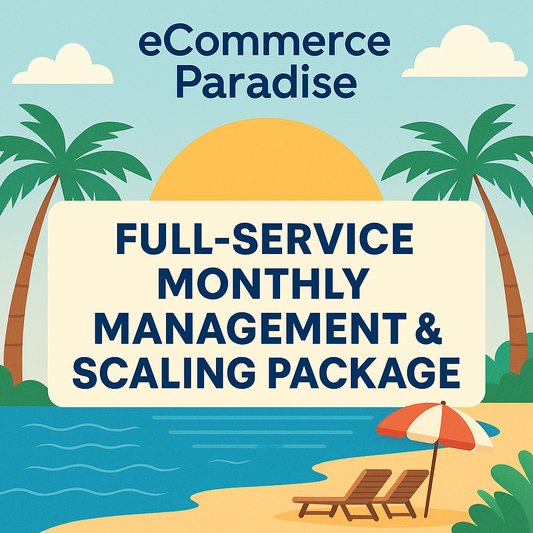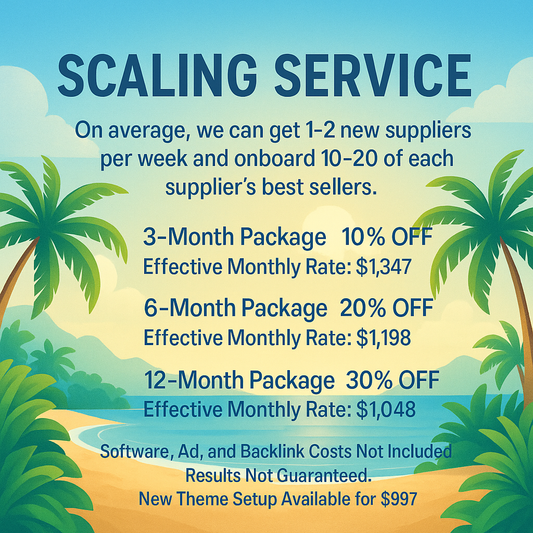
Mastering Internal Links for Ecommerce Success
Building a strong internal linking structure is crucial for any ecommerce website aiming to elevate its SEO and improve user experience. As the founder of Ecommerce Paradise, I want you to understand that crafting a robust internal linking strategy can not only drive more traffic but also enhance your site's visibility on platforms like Google. If you’re diving into the world of dropshipping or refining your strategy in Google Shopping Ads or Email Marketing, read on. It’s time to unlock the full potential of your online store!
Understanding Internal Links
Before we dive deeper, let’s clarify what internal linking is. In simple terms, an internal link is a hyperlink that points from one page of your website to another. This can be crucial for guiding your visitors through their journey on your site, as well as helping search engines understand the structure and importance of your pages. Internal links boost ecommerce SEO by distributing page authority across your site.
Why Internal Linking Matters
Let’s break down the reasons why internal linking is quintessential for any ecommerce store:
Improved Site Navigation
When appropriately done, internal links can help your users navigate your website seamlessly. By directing customers to relevant categories, products, or blog posts, you're enhancing their shopping experience. This ultimately leads to higher conversion rates, as users can easily find what they're looking for.
Boosted SEO Performance
Search engines like Google prioritize websites that are easy to navigate. A solid internal linking structure allows search engines to crawl and index your pages better. Pages with more internal links often rank higher in search results, which is vital for attracting organic traffic to your store.
Reduced Bounce Rate
When visitors land on your online store, you want to keep them there, right? Internal links can lead users from one page to another, keeping them engaged and minimizing the chances they’ll click away without making a purchase. Fewer bounces increase your site's authority and ultimately improve your SEO.
How to Build a Strong Internal Linking Structure
Now that we understand the importance of internal linking, let’s discuss how to build a strong internal linking structure for your ecommerce store.
Start with a Clear Hierarchical Structure
Your website should have a clear hierarchy. At the top, you’d have your homepage, followed by category pages, product pages, and finally, individual blog posts. This structure helps you identify which pages should link to one another. For example, your category pages should link to related product pages, while blog posts can link back to relevant categories. In setting this up, think about how users naturally navigate through your site.
Use Descriptive Anchor Text
When linking to other pages, always use descriptive anchor text. This is the clickable text in a hyperlink. Using relevant keywords in your anchor text, such as “dropshipping tips” or “best SEO practices,” offers context to users and aids search engines in understanding what the linked page is about. Avoid vague terms like “click here.”
Link Related Content
Utilize your blog to create valuable content that links back to your product pages or category pages. For example, if you write a blog post about the benefits of effective Email Marketing in ecommerce, find opportunities to link to your available services or related products. This not only keeps your audience engaged but enhances your authority within your niche.
Avoid Overloading Internal Links
While internal linking is vital, moderation is key. Overloading a page with too many internal links can overwhelm your users and diminish the importance of each link. Ideally, aim for 2-5 internal links per page, guiding users without being intrusive.
Utilizing Tools for Internal Linking
Several tools can assist you in managing your internal linking strategy. Here are a few that you might find helpful:
- Ahrefs: This comprehensive tool helps you analyze your current internal linking structure and offers insights into how to optimize it.
- SEMrush: With its site audit feature, you can check for broken links and ensure that your internal linking structure is working effectively.
- LinkWhisper: This tool automates some of the internal linking process, making it easier to suggest relevant internal links within your content.
Regularly Review Your Internal Links
Your internal linking strategy is not a one-time task; it's an ongoing process. Regularly review your links and check if they still redirect to relevant pages. If you have updated or removed products, make sure to update links accordingly to avoid leading customers to dead ends. This upkeep is crucial in maintaining both your user experience and ecommerce SEO.
The Impact of Internal Linking on Sales
So, how does all of this affect your bottom line? Let's put numbers to it. According to a study, sites with a solid internal linking strategy can see an uplift in sales conversion rates by over 10%. This means that having a well-thought-out internal linking structure can directly contribute to more sales and, ultimately, more revenue.
Link to Promotions or Special Offers
Another strategy for improving sales is linking to current promotions within your internal links. If you have a special offer running, make sure to link it within relevant blog posts or product pages. This encourages users to take action and can significantly boost conversion rates during campaigns.
Integrating Internal Linking with Other Strategies
Your SEO strategy should be holistic. That means integrating your internal linking with other marketing tactics, such as Email Marketing and Google Shopping Ads.
Email Marketing Campaigns
Don't forget about your email campaigns! Incorporate internal links into your emails to drive traffic back to your site. If you're highlighting a new blog post or product launch, include relevant internal links to enhance customer engagement.
Google Shopping Ads
While Google Shopping Ads primarily focus on product visibility, improving your internal linking structure can enhance the overall user experience when users click through to your site. If they find what they need efficiently, they’re more likely to buy and return for future missions!
Transforming Visitors into Loyal Customers
The ultimate goal of your internal linking strategy should be to build trust and loyalty among your customers. By guiding them through your site clearly and effectively, you’re demonstrating transparency and ease of use. In turn, customers are more likely to make a purchase and return for future visits.
Analyzing Your Strategy
As part of turning visitors into loyal customers, don’t forget to analyze your data. Use tools like Google Analytics to track user behavior and see which links are engaging users. If you identify high-traffic pages, consider enhancing them with even more internal links redirecting to other valuable content. This will keep your customers engaged for longer periods.
Your Path to an Internal Linking Masterclass
Building a strong internal linking structure doesn’t need to be complicated. By implementing these strategies and maintaining a focus on the user experience, your ecommerce site can flourish. Links are the bridges that connect your visitors to vital content, and optimizing those links will position you higher in search rankings, enrich customer engagement, and ultimately drive sales.
Remember, we’re all in this together. Keep experimenting and adjusting your strategies, and you'll find a method that resonates with your audience. Your ecommerce store is on the brink of greatness, and a stellar internal linking structure can be your secret weapon for success!


















